Search
Search Results
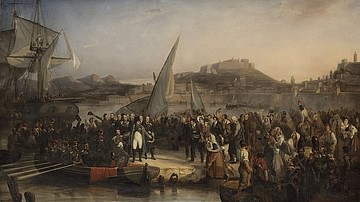
Image
Napoleon Leaving Elba
Napoleon prepares to escape from his exile on the island of Elba, 26 February 1815. Oil on canvas by Joseph Beaume, 1836.
Musée Naval et Napoléonien, Cap d'Antibes.
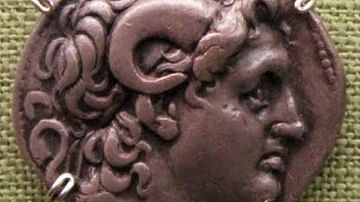
Image
Tetradrachm of the Aetolian League
Silver tetradrachm of the Aetolian League, depicting Alexander the Great with the horn of the Egyptian god Amun. 29 mm (1.14 in), 17.1 g (0.60 oz), 323-281 BCE.
National Museum, Warsaw.
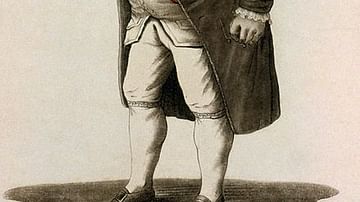
Image
Louis XVI Wearing a Cap of Liberty
Depiction of King Louis XVI of France wearing the red Phrygian cap of liberty and drinking a toast to the nation, as he did during the Demonstration of 20 June 1792. Etching by an unknown author, c. 1792. Library of Congress, Washington...
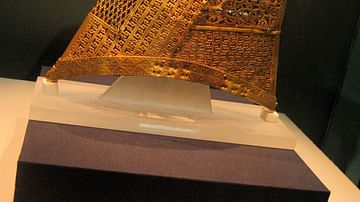
Image
Gold Silla Cap
A gold Silla crown cap from Cheonmaching (the 'Heavenly Horse Tomb'), Gyeongju, Korea. It is made from four gold plates bent and riveted together. 6th century CE. National Treasure No. 189. (Gyeongju National Museum, South Korea)
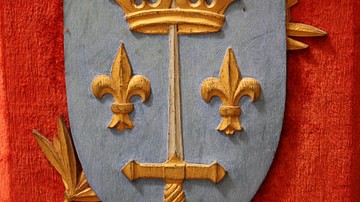
Definition
Medieval Heraldry
Heraldry, which is the use of inherited coats of arms and other symbols to show personal identity and family lineage, began on the mid-12th century CE battlefield as an easy means to identify medieval royalty and princes who were otherwise...
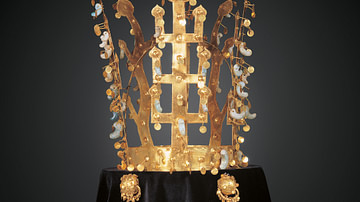
Article
The Gold Crowns of Silla
The Silla Kingdom ruled south-eastern Korea during the Three Kingdoms period (1st century BCE - 7th century CE) and then, as the Unified Silla Kingdom, all of Korea from 668 to 935 CE. The Silla produced fine pieces of art, but their most...
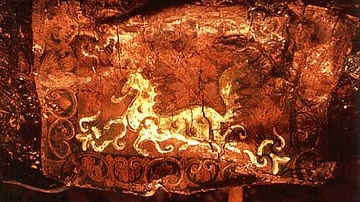
Definition
Cheonmachong
Cheonmachong is a 5-6th-century CE royal tomb of the ancient Silla kingdom of Korea located at the Daereungwon Tomb Complex in Gyeongju. It is popularly known as the 'Heavenly Horse Tomb' because of a painting of that animal on a birch-bark...
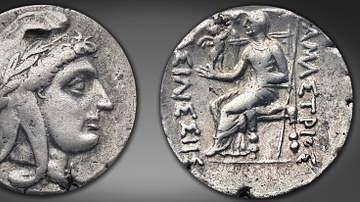
Definition
Amastris
Amastris (c. 340/39-285 BCE) was a niece of the Persian king Darius III (r. 336-330 BCE) through her father Oxyathres. She was married in succession to Alexander's general Craterus, the tyrant Dionysius of Heraclea, and finally to Lysimachus...
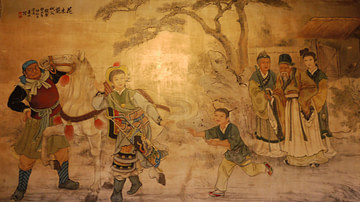
Article
Mulan: The Legend Through History
Mulan (“magnolia”) is a legendary character in Chinese literature who is best known in the modern day from the Disney filmed adaptations (1998, 2020). Her story, however, about a young girl who takes her father's place in the army to help...
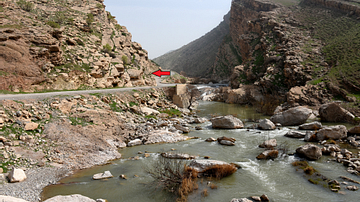
Article
The Lullubian Rock Relief of Darband-i Basara
History doesn't repeat itself, but it does rhyme. (Mark Twain) Darband-i Basara (the Pass of Basara) is a narrow natural gorge which transects the anticlines of the upper part of the Qaradagh Mountain Range. The elevation is about...